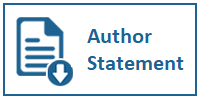Interactive AR Book As Media For Educating Children About Colorism in Jakarta
DOI:
https://doi.org/10.31937/ultimart.v15i2.2775Abstract
The obsession with skin whiteness as a symbol of beauty has long been rampant in the Asian continent, including Indonesia. During the colonial period in Indonesia, white women had become beauty icons, as shown in old magazines. Research and the media have shown that colorism remains largely ignored in the modern era. This study aims to find an effective way to educate the younger generation about the problem of colorism. The research target was limited to the city of Jakarta by observing and interviewing six to eight-year-old students at two local schools in the South. The methods used in this study were interviews with child psychology experts and focus group discussions with the target market. The results show that the stigma of colorism exists among children in big and modern cities like Jakarta. There is a need for education and triggering action on this issue. Using an interactive children's AR book can be an educational and emotional tool for understanding colorism. AR features deepen the story through animated illustrations and increase interaction with readers.
Keywords: colorism; educating; children; AR book; illustration
Downloads
Published
How to Cite
Issue
Section
License
Authors retain copyright and grant the journal right of first publication with the work simultaneously licensed under a Creative Commons Attribution-ShareAlike International License (CC-BY-SA 4.0) that allows others to share the work with an acknowledgement of the work's authorship and initial publication in this journal.
Authors are able to enter into separate, additional contractual arrangements for the non-exclusive distribution of the journal's published version of the work (e.g., post it to an institutional repository or publish it in a book), with an acknowledgement of its initial publication in this journal.
Copyright without Restrictions
The journal permits the author(s) to hold the copyright without restrictions and will hold distributing rights without limitations.
The submitted papers are assumed to contain no proprietary material unprotected by patent or patent application; responsibility for technical content and for protection of proprietary material rests solely with the author(s) and their organizations and is not the responsibility of the Ultimart: Jurnal Komunikasi Visual or its Editorial Staff. The main (first/corresponding) author is responsible for ensuring that the article has been seen and approved by all the other authors. It is the responsibility of the author to obtain all necessary copyright release permissions for the use of any copyrighted materials in the manuscript prior to the submission.















